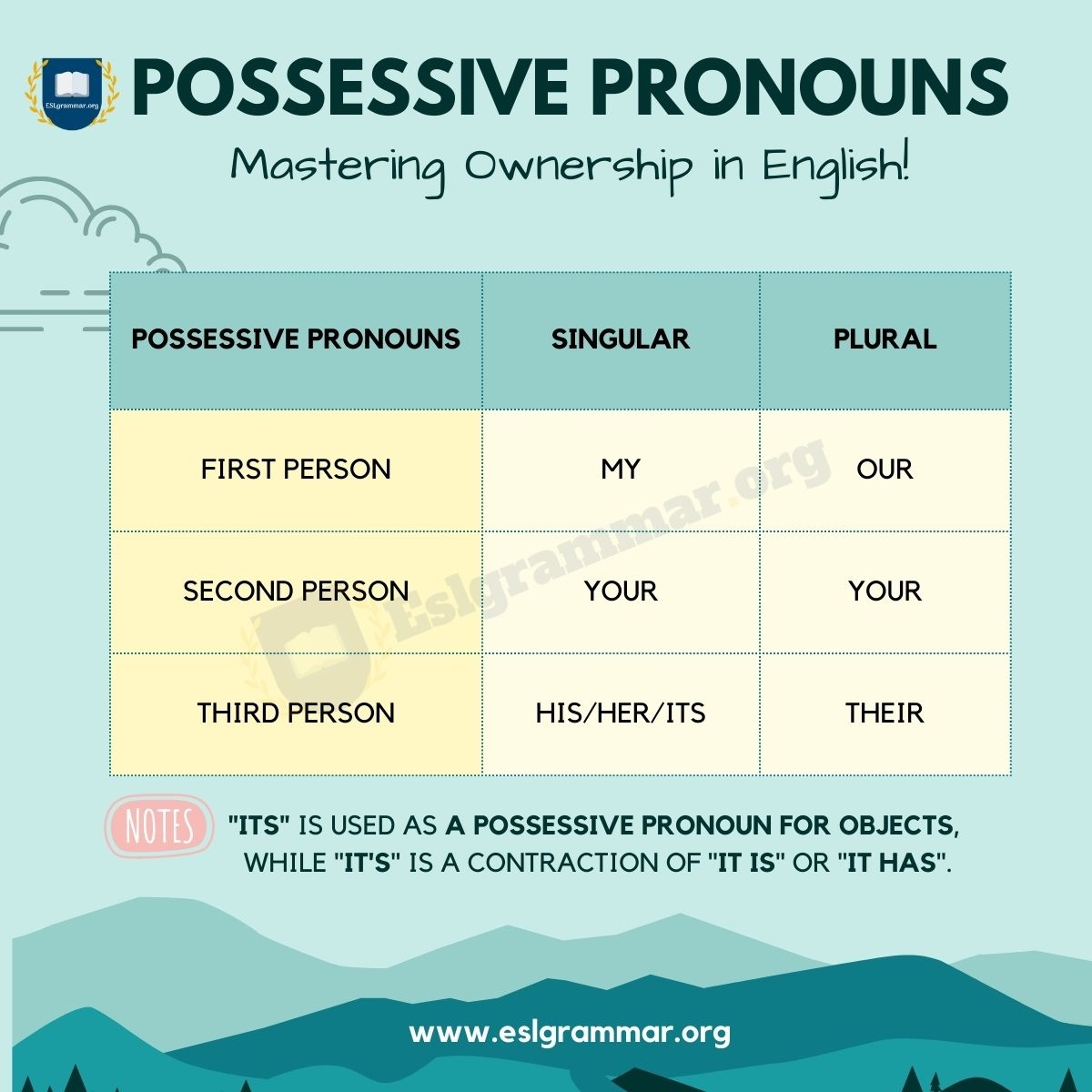In the English language, pronouns play a crucial role in communication by replacing nouns and reducing repetition. Personal pronouns refer to the person speaking (first person), the person spoken to (second person), and the person or thing being spoken about (third person). Possessive pronouns show ownership or possession of something. Understanding and using these pronouns correctly is essential for effective communication.
Personal pronouns help us avoid awkward repetition in writing and conversation. They can be singular or plural, and their form changes depending on the role they play in the sentence. Possessive pronouns, on the other hand, indicate ownership or possession and eliminate the need to use nouns repeatedly. Learning to use personal and possessive pronouns correctly will enhance your language skills and make your writing more concise.
Personal and Possessive Pronouns List
Personal Pronouns:
- I (first person singular)
- You (second person singular/plural)
- He, She, It (third person singular)
- We (first person plural)
- They (third person plural)
Possessive Pronouns:
- My, Mine (first person singular)
- Your, Yours (second person singular/plural)
- His, Her, Hers (third person singular)
- Our, Ours (first person plural)
- Their, Theirs (third person plural)
Using personal pronouns correctly can help you communicate more effectively and make your writing more engaging. Similarly, knowing when to use possessive pronouns will make your sentences more concise and clear. Practice using these pronouns in various contexts to improve your language skills and enhance your communication abilities.
Remember that personal pronouns refer to specific individuals or groups, while possessive pronouns show ownership or possession. By mastering the use of these pronouns, you can elevate your writing and speech to a higher level of clarity and precision. Keep practicing and incorporating personal and possessive pronouns into your everyday communication to become a more skilled and confident language user.
In conclusion, personal and possessive pronouns are essential components of the English language that help us communicate effectively and efficiently. By understanding the different forms of personal pronouns and possessive pronouns, you can enhance your language skills and improve your communication abilities. Practice using these pronouns in your writing and speech to become a more proficient and articulate communicator.
